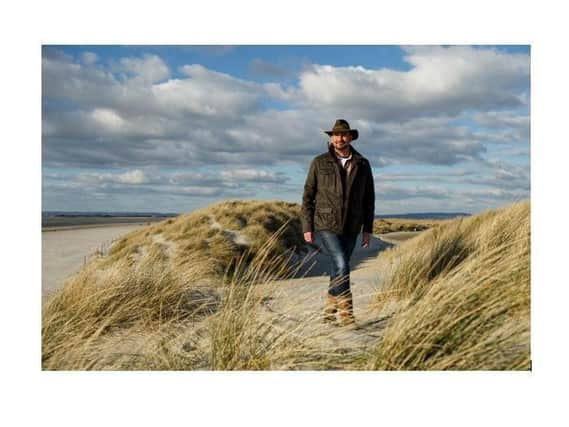Tristan Gooley offers the art of natural navigation


To the word navigation, Tristan Gooley, who lives near Eartham, has added the word natural – for an approach he is recommending to us all through his popular online natural navigation courses.
“I think there are something like 26 different meanings to the word natural, but my meaning is that you are navigating without any tools at all.”
Advertisement
Hide AdAdvertisement
Hide AdThis is where you leave your smart phones behind and tune in instead to the instincts which our ancestors – way before the days of sextants and the like – used to have; instincts which have become blurred by our increased sophistication.
“I am talking about the days even before bits of wood and string,” says Tristan aka The Natural Navigator.
For Tristan, it’s not about need. Much more interestingly, it is a cultural choice. You might say ‘Why not just use the available technology?’
“And for me that is an almost philosophical question. I don’t argue that it is about necessity, about knowing what to do if your batteries go or whatever. I just take the view that it is better to understand what is happening around you.”
Advertisement
Hide AdAdvertisement
Hide AdNatural navigation is the rare art of finding your way using nature. Natural navigators learn to read the sun, moon, stars, weather, land, sea, plants and animals. It is possible to navigate naturally on land or water, in the wild or in cities, Tristan argues. But his point is that he doesn’t see it as a survival skill; more interestingly, for Tristan, it’s a means to enrich journeys and connect with the world around us.
He offers the analogy with food: “People don’t think much about navigation, but they do think about food, and we thought for thousands of years that food was a necessity subject.”
And of course it still is: “But in the past 50 years or so, things have changed quite dramatically and we now also see food as very much a cultural thing, and it is the same with natural navigation.”
Tristan’s natural navigation courses are available through his website http://www.naturalnavigator.com“What I say is that if you just want to go from A to B, you can do it without natural navigation, but if you want the richest possible experience, then you should certainly use natural navigation because you are then going to be taking notice of all the things that our senses are trying to feed us.”
Advertisement
Hide AdAdvertisement
Hide AdPsychologists tell us that the brain is fed something in the order of 11 million pieces of information a second, the vast proportion of which are simply screened out culturally: “But if you go back to our ancestors, if they heard a bird’s alarm in the forest, they would know that predators are approaching. They prioritised that information. A modern example would be the phone ringing. If the phone rings at 11.30 on a Saturday morning, you just think ‘Oh, I will answer the phone’, but if it goes at 11.30 at night, your reaction is quite different.”
Tristan, author of The Natural Navigator and How to Read Water, takes that approach to navigation. Leave behind the emails, the smart phones, the electronic prompts and use and develop your instincts instead.
“Most of my work when people are new to the subject is very straightforward and accessible, looking for the signs, like where the sun is in the middle of the day.
“For me, one of the great joys is spreading the net of natural navigation. I feel very ambassadorial about the subject. I am trying to get more and more people interested in it. The net is spread quite wide but thin at the moment.”
But it is easy to get into: “Like a lot of these arts, I try to keep it as simple and fun for people as possible, but you can go to so many levels of richness and complexity and skill.”